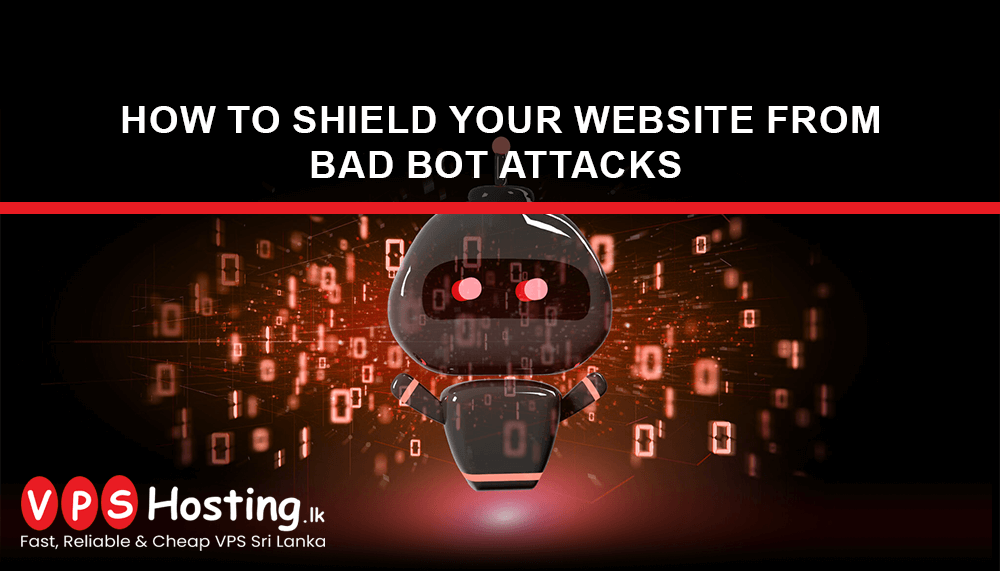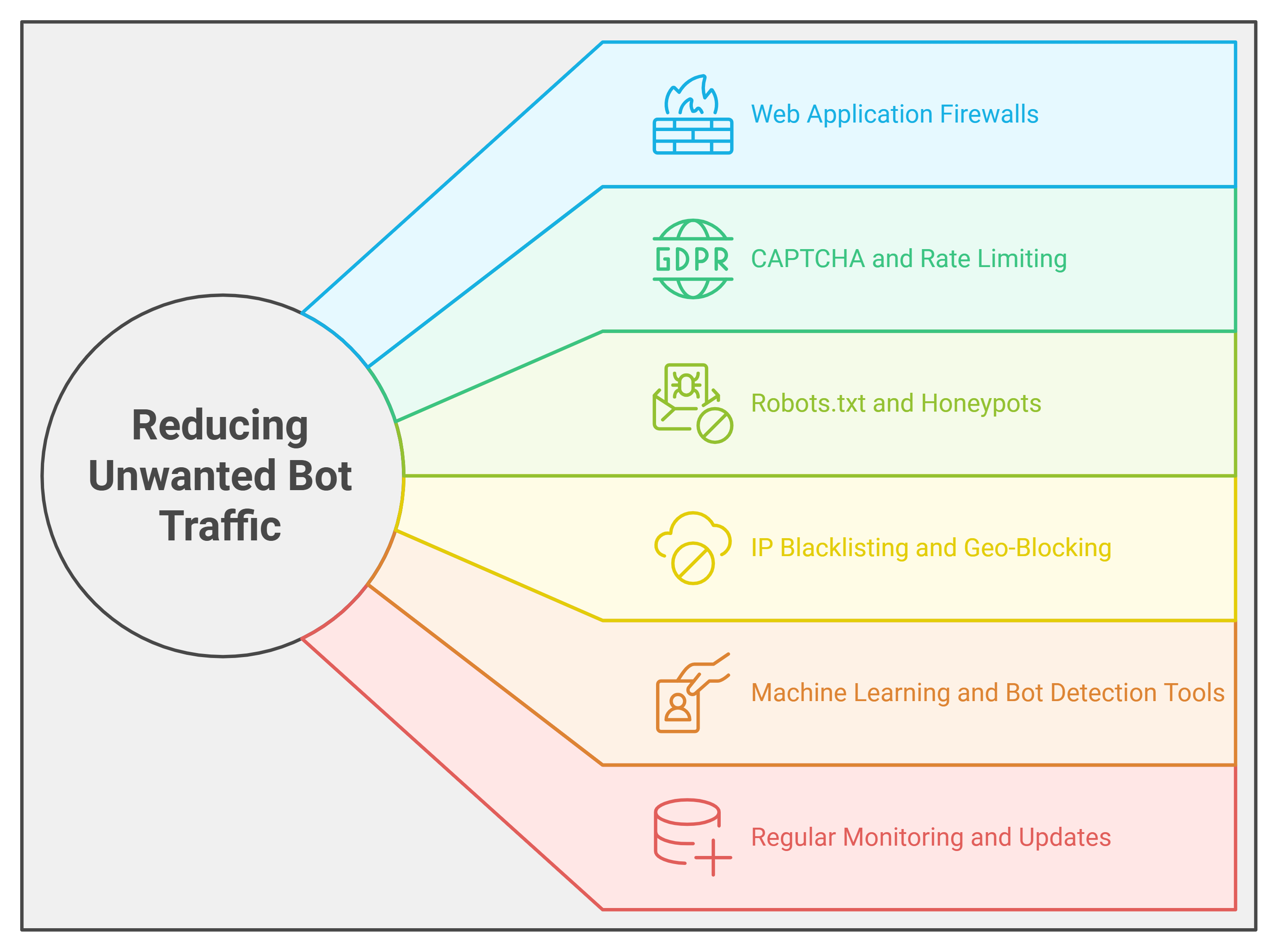
How to Shield Your Website from Bad Bot Attacks
Online security in this highly digital world is under constant threat-not just from hackers and viruses. Bad bots are doing an excellent job of masquerading as humans, having fast-paced development capabilities in which they leech website vulnerabilities for disrupting user experience, degrading performance and harming SEO. They usually work under your nose, inflating your traffic data, scraping valuable content and giving owners of the web a headache. If you want to make a conscious effort to protect your website, there's a need to understand and block the bad bots.
In this post, we will have a look at some of the effective strategies that will help in protecting your site against bad bots and ensuring that your website remains secure, performant and usable.
Good Bots vs. Bad Bots: What's the Difference?
While bad bots are disruptive, not all bots pose a threat. Good bots (like search engine crawlers) are essential for your site’s discoverability, indexing content to ensure your site shows up in search results. In contrast, bad bots engage in harmful activities like scraping data, spamming or executing cyberattacks.
Good bots follow established protocols and often identify themselves clearly in your server logs. Bad bots, however, disguise themselves or use various IPs to avoid detection. Understanding the behavioral patterns of these bots can help in identifying them accurately.

Common Risks Associated with Bad Bot Attacks
Malicious bot activity can disrupt your website and business in so many ways; here are a few key risks:
- Performance Issues: Bots eat up bandwidth and server resources, slowing down your site.
- Data Theft: Bots scrape content and can even reach sensitive information if not stopped.
- SEO Damage: High bounce rates and duplicate content created by bots will negatively affect your SEO rankings.
These risks make bot defense an essential aspect of website management.
Preventative Measures to Shield Your Website from Bots
It is hard to identify bot traffic, but it is also very important to an effective defense plan. Here are some indicators to look out for:
- Traffic Spikes: A sudden increase in traffic coming in from non-human sources might indicate the presence of bots.
- Unusual Patterns: High bounce rates and multiple page loads within a short period can signify the presence of bots. Also, unusual user-agent strings may be an indicator.
Web analytics tools can back-trace those signals to the origins and therefore begin to identify nefarious activity.
Defensive Measures to Safeguard Your Website Against Bots
The best time to defend your website against bots is before they break in. Here are a few initial defenses:
- Traffic Monitoring: Monitor your website's traffic and search for suspicious activity on a routine basis.
- Bot Filtering: Take advantage of bot filters found in analytics tools to bifurcate human traffic from suspected bot traffic.
How to Reduce Unwanted Bot Traffic
Reducing unwanted bot traffic would be easy if there were an organized approach in checking and regulating bots.
1. Use of Web Application Firewalls (WAF)
- A Web Application Firewall protects a website from all possible harms produced by impostors, which filters out malicious web traffic. Most of the Web Application Firewalls have in-built functionalities that will surely enable you to definitely have control of your bot traffic. Through WAF, it can detect known bots, block them and then adjust the settings according to the possible future attacks.
- Learn What Is a Proxy Server Firewall? can enhance your site’s defense against unwanted traffic and improve security measures alongside bot management.
2. Implementing CAPTCHA and Rate Limiting
- CAPTCHA is excellent for proving a human user by challenging the bots. You can deploy CAPTCHA in form submissions, login forms and other crucial areas of your site for reducing spam and unauthorized attempts of access. Rate limiting works by regulating and limiting the number of requests a user or IP address can make over a specified time frame, thus preventing excessive access attempts.
3. Managing Bots Through Robots.Txt AND Honeypots
- Direct the good bots, such as search engines and reject the bad ones with the
robots.txt file-simple yet mighty. Identify sensitive areas you don't want bad bots to see. Honeypots are helpful hidden traps to identify malicious bots and give greater control over your bot defenses.
4. IP Blacklisting and Geo-Blocking
- The better solution might be the blocking of some IP addresses that are involved in the attack. If specific regions show high bot activities, geo-blocking will be a defense addition. Many web hosting providers have built-in tools to manage your IP restrictions and geo-blocking settings that you can have to keep a safer environment for your website.
5. Advanced Solutions: Machine Learning and Bot Detection Tools
- Primarily, machine learning models will review the patterns of traffic to detect and prevent bots in real-time, thus adapting to the nature of new emerging threats. Specialized bot-detecting tools include, but are not limited to Distil Networks and BotGuard that are especially designed to automatically detect and mitigate bot attacks and provide advanced automated protection for your website.
6. Monitoring and Updating Bot Defense Strategies Regularly
- The more the sophistication of bots evolves, the more it is similarly important to stay ahead in updating your bot defense strategy. This you can do sometimes by reviewing your website's bot defenses and making sure you apply the latest available tools and methods. Constant audits to firewalls, WAFs and other defense systems will, therefore, ensure that you keep safeguarding yourself against evolving bot threats.

Conclusion
The maintenance of a safe and high-functioning website would be considered incomplete without the protection of your website from those bad bots. These strategies would help in reducing bot-related risks to your website, ranging from firewalls to CAPTCHA, to advanced machine learning detection. Monitor and regularly modify your bot defense strategy to ensure adequate protection for your website.
FAQs
- What are the symptoms of a bot attack on a website?
-
- A bot attack can sometimes be represented by sudden traffic spikiness, high bounce rates and strange user-agent activity.
- How do bots affect SEO?
-
- Bots may escalate the bounce rate and content duplication issues, hence negatively impacting the SEO rankings.
- Which of the sectors are more prone to bots?
-
- Ecommerce, finance and social networks are most vulnerable as they contain certain types of data.
- How will you monitor bot activities?
-
- Tracking of bot activities is best possible with blockers and detectors present in both versions of Google Search Console. You could use analytics tools and WAF logs to look for unusual traffic patterns that would indicate a malicious bot attack.
- Can all bots be banned from accessing all websites?
-
- No, it is impossible to ban all bots from a website. But you can build effective defenses to drastically minimize malicious bot traffic.